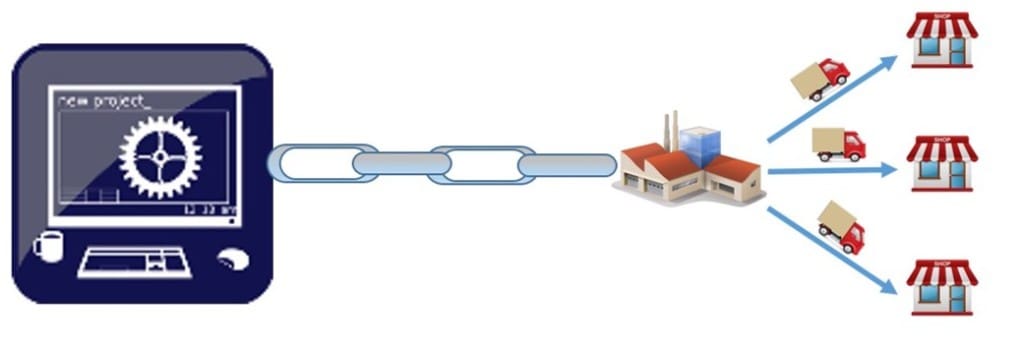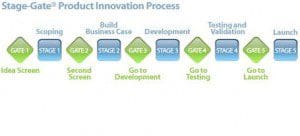I wrote a Logistics Viewpoints article in October that discussed how Diageo has transformed its supply chain from a cost savings function to an enabler of growth-driving innovation. This case discussed how supply chain was elevated to a strategic level due to its critical role in executing new product introductions. I found the connection between product introduction and supply chain to be interesting, so I reached out to my colleague Dick Slansky to obtain his perspective on the relationship between these corporate functions. Dick is a senior analyst at ARC covering PLM and engineering design tools. Prior to joining ARC, Dick was with the Boeing Company for over 28 years.

Clint: Thank you for providing Logistics Viewpoints readers with a PLM perspective on supply chain.
D. Slansky: It’s my pleasure.
Clint: Maybe we can start by getting an explanation of PLM and how it extends beyond product design.
D. Slansky: What we’re talking about is the full extent of the product lifecycle, from concept to design, to manufacturing processes, to the shop floor. Today in PLM, when an engineering organization initiates a design of the overall product, assembly, or components, what they’re doing is building an engineering BOM, which defines the resources and the shop orders.
Clint: And then the materials within the BOM…, well they need to be obtained.
D. Slansky: Yes. The engineer has to make “make-or-buy” decisions at a very early stage in the product lifecycle. And these decisions have extensive impacts on the supply chain. The industries, like automotive, that tightly integrate design with manufacturing practices must maintain tight control over the supply chain, down through the tiers that constitute the final product. When you extend this out in areas like electronics where the supply chain is truly global, the orchestration becomes extremely critical.
Clint: Are there other processes within the early stages of the product lifecycle that have critical links to the supply chain?
D. Slansky: In addition to design engineering, there is requirements engineering going on at an early stage of development. Requirements engineering isn’t necessarily designing fit, form, and function. It’s determining the requirements to manufacture and build the products – the “who, what, and where” of the process. It’s one of the preliminary exercises that determines essential aspects of the supply chain. It determines how the product will fit the market requirements and then further delineates what needs to be done in the design-build process and makes direct links into supply chain planning. One of the most critical elements is meeting the product’s time-to-launch and hitting the market window. And a main reason companies get into trouble meeting production schedules is because of deficiencies in the supply chain.
Clint: We have been discussing ways in which design and requirements engineering affect supply chain. In what ways do you see the supply chain function affect design?
D. Slansky: There are a number of touch points. When there is a supply chain constraint or requirement, often this is a matter of a particular component being unavailable. So the supply chain planning system pings the PLM system and requests a replacement part or an equivalent. Then the engineering design function needs to come up with a list of engineering equivalents that can serve as a replacement.
Also, there are continuous improvement processes. There is a lot of “as-built” information that is generated during the manufacturing process. Today with all of the analytical tools available, this information can be applied to affect some change on the manufacturing processes and maybe even back to the product design.
Finally, the notion of concurrent engineering is that manufacturers or suppliers are concurrent with the design process so that when the designer comes out with the requirements, the production function will come back at an early stage and say they can’t do it for whatever reason. In the old days internal manufacturing engineers had to figure out how to build. Today that manufacturing engineer is often outside the organization at a supplier.
Clint: So in a sense this makes supplier relationship management critical.
D. Slansky: Yes, and this is an area where processes have become more sophisticated. Today’s PLM systems allow designers to go in and view and exchange engineering drawings across organizations. And it’s not just about meeting a delivery date. Suppliers get involved in the design process to meet the requirements for delivering the product. Very often the supplier is the one with the design expertise.
Clint: Thanks Dick. So my key takeaways are that the integration of PLM and supply chain are becoming more sophisticated to support the increasing complexity of products and supply chains. And a responsive supply chain is critical to meeting production schedules and ultimately the market window.
D. Slansky: That’s right – first to market, first to profit.

















